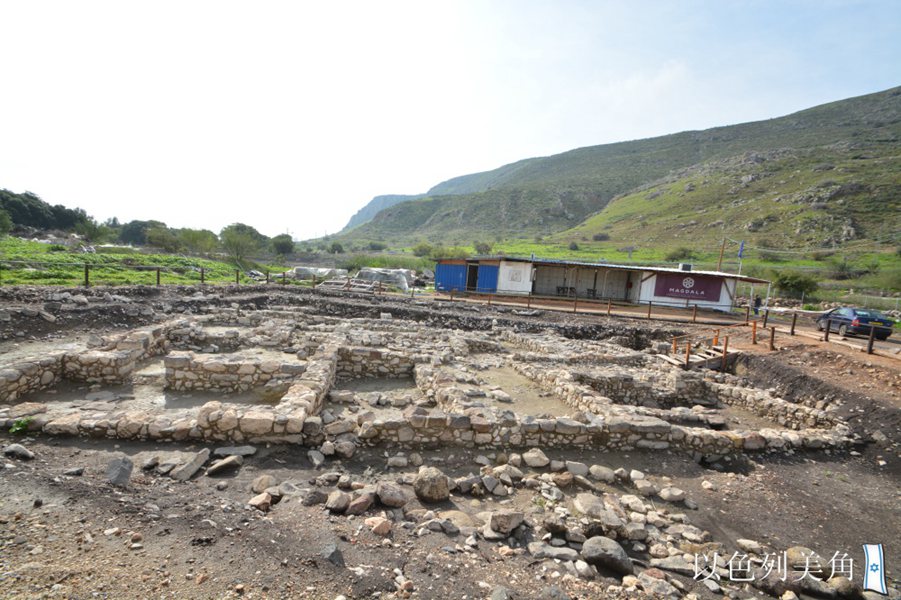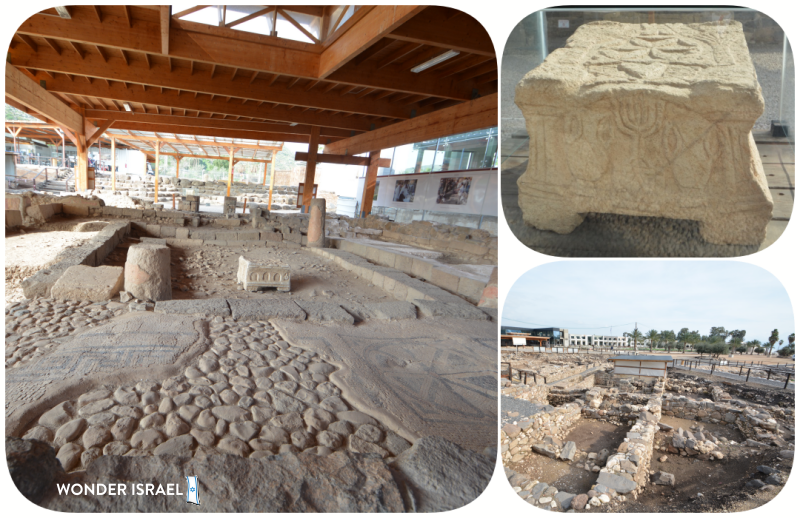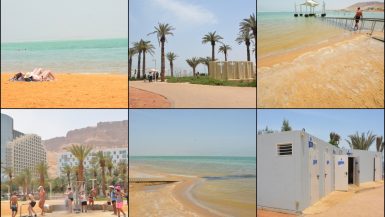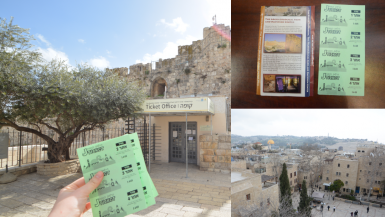Market
The street next to the syngagogue was the main shopping street of this market. The water basin was made from basalt, which is typical in Galilee area. The synagogues in Galilee built in this era are mostly made with basalt, and hence, mostly black.
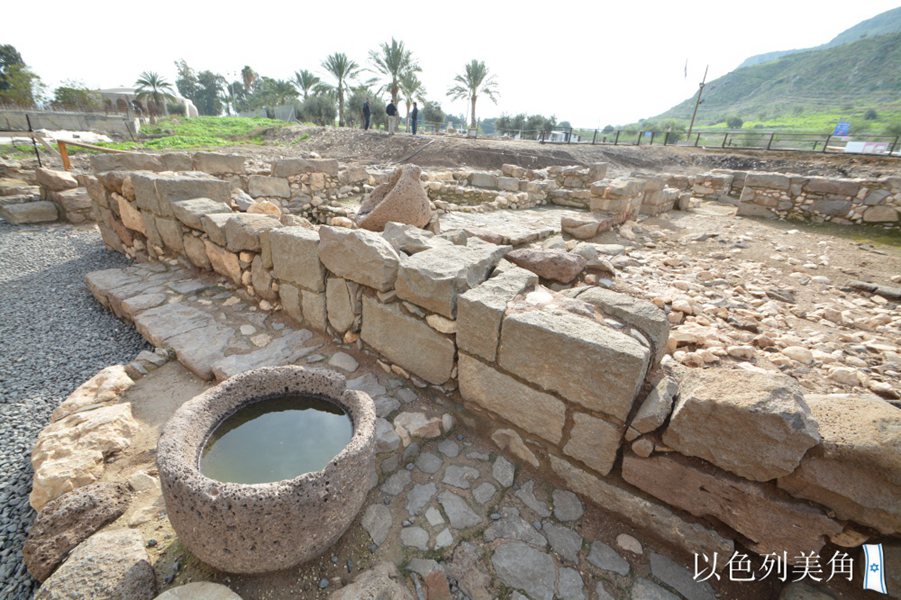
This whole area was a market! It’s huge! From where I was standing to where the synagogue was (the one behind blue roof), it’s a market! So you can imagine how thriving Magdala was like. Animal bones, glasses and many pottery pieces were found here. Some shops had tiny pools/ponds in it, that could mean they were selling seafood!
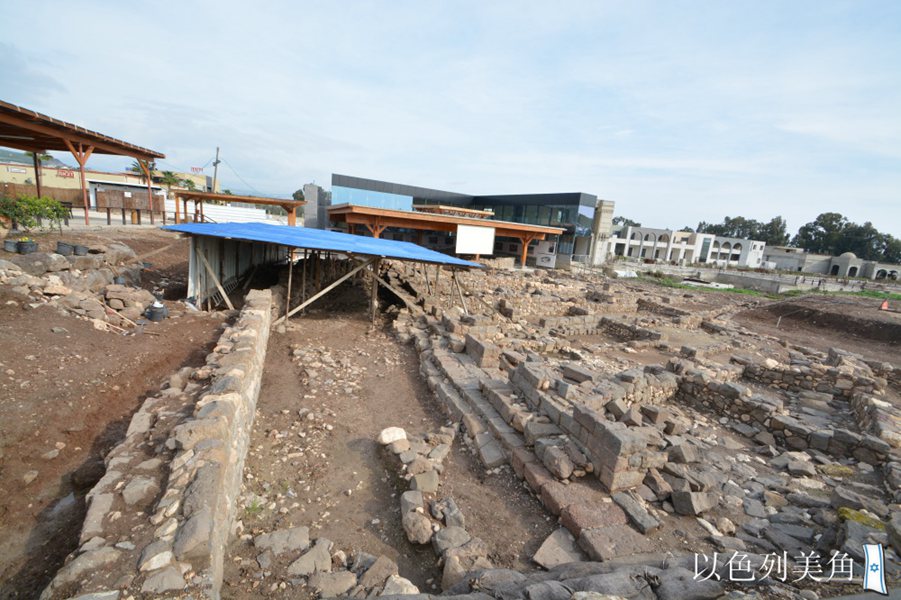
This is where a tiny coin was found! It’s wheat!

Mikvat and the House of Dice
Next the the market are several mikvehs. According to Halacha (The way of living), one must be ritually clean before entering a synagogue.

There are several levels on ‘clean water’. The cleanest type of water is ‘running water’, or ‘living water’. The source of water here in Magdala is from Arbel stream, since it’s living water, itmakes the mikvehs here more desirable than many other places. The size of this mikvah is 2.15m x2.3m , and 2m deep. There are small holes on both sides on the 3rd step to allow water to flow, the size is about 20cmx30cm.

The other 2 mikvehs…are somewhere around here.

Under this roof, there is a mosiac floor! From here you can go to another mikveh! So why do you need a fancy floor like this? It’s possible that this hall is for the elite class of Magdala.


A reservoir with an arch. The buildings here are made by 2 types of stones, the dark one is basalt and the light one is limestone. Very typical in this region.
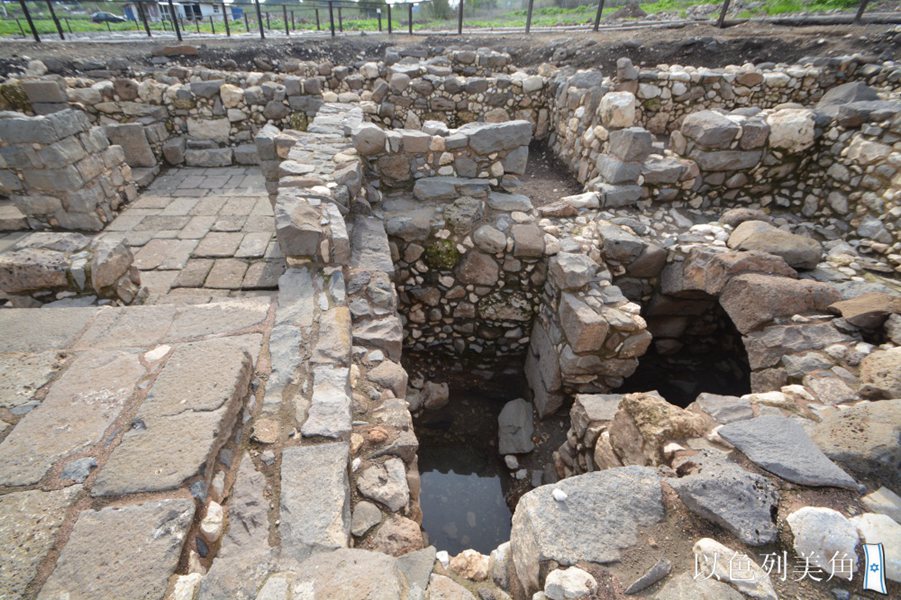
Domestic Housing Area
Finally, the residential area! This is where residents of Magdala lived! But only 10% of Magdala is excavated so far. (And maybe the rest will not be excavated) You can already see urban planning in this fishing village with such organized structure. Coins, fishing weights and glass ceramic fragments, and some residual material were found here. It means people used to eat and drink here.
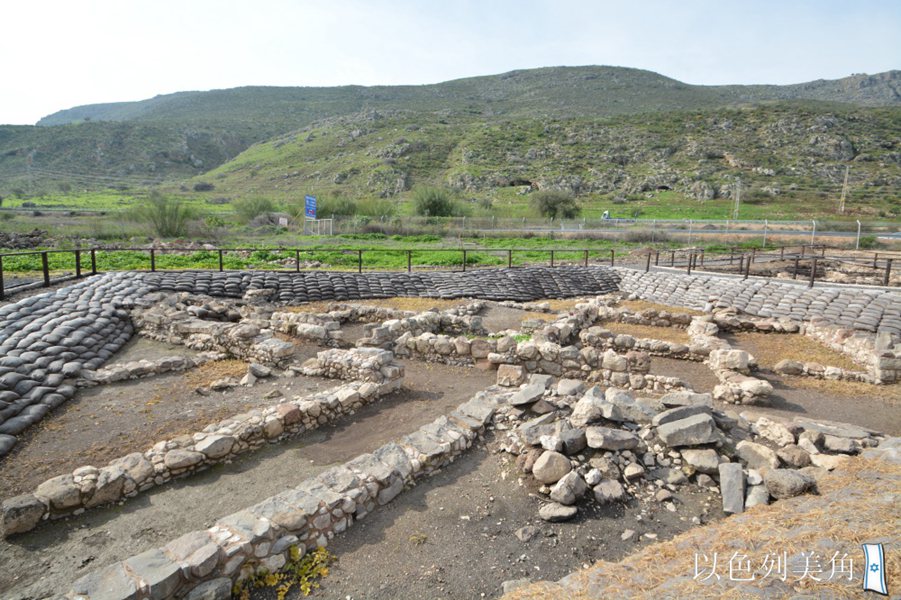
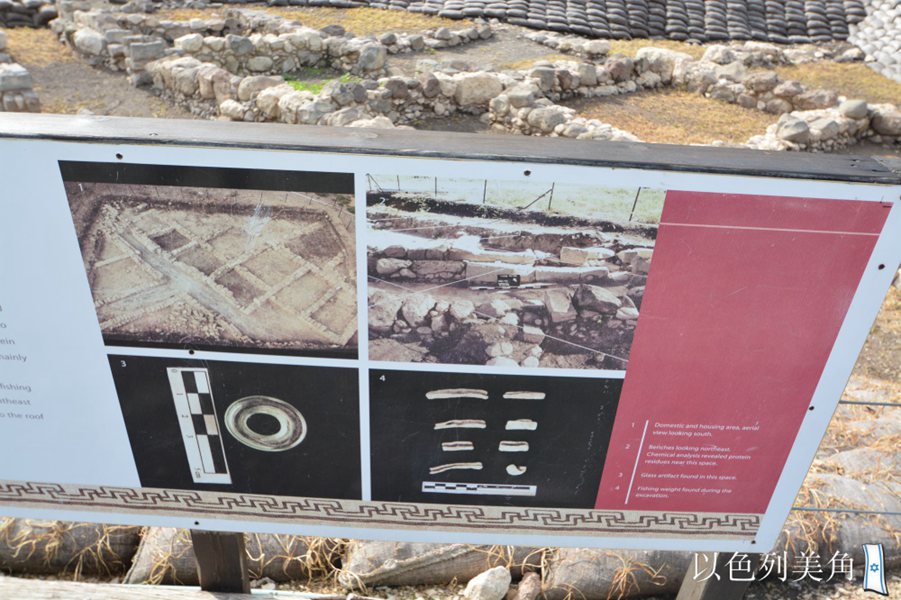
This is another housing area. This structure was excavated from a deeper strata. The age os this structure is possibly in the Greek period (332 BC to 63 BC). The kitchen is designed to be placed by the main road. There are two doors from the road to enter the house, one goest o the courtyard, and the other goes to the kitchen.
